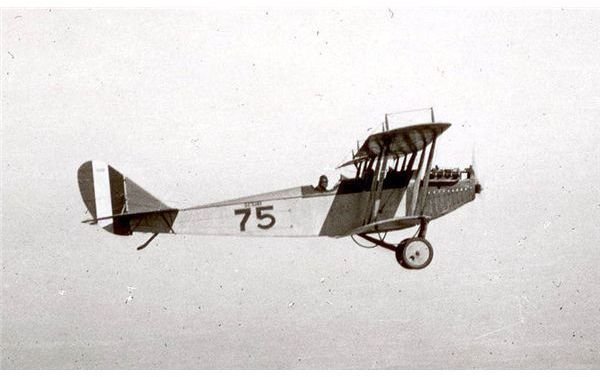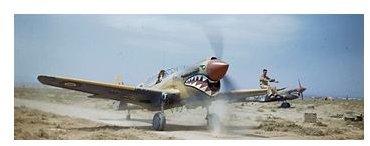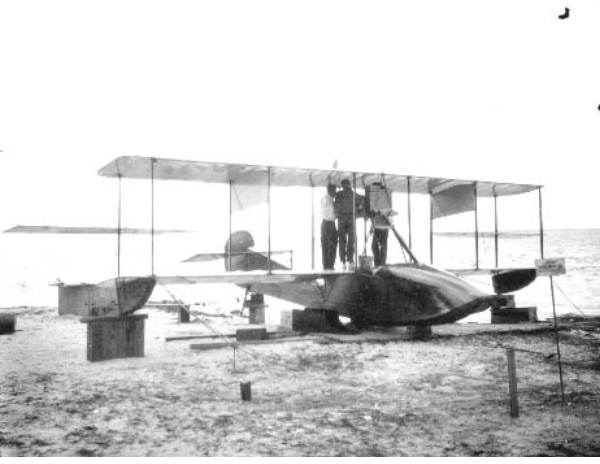Curtiss Airplane Designs - Early Manufacturer of Military Planes Including the Barnstormer JN-4 Jenny Biplane
Founding the Curtiss Airplane Company
The origins of the Curtiss airplane company stem from the creation of the Aerial Experimental Association in 1907. Glenn Curtiss, the brainchild of the research group, joined forces with a number of other scientists of the day to move forward the concepts of aviation. Among the most prominent researchers of the organization was Dr. Alexander Graham Bell. Within two years, Curtiss joined one of the pioneers of American aviation, Augustus Moore Herring, to form the Herring-Curtiss Company. The firm was renamed simply the Curtiss Aeroplane Company the following year.
Curtiss’s company spent the next few years developing new concepts for heavier-than-air vehicles. By the onset of war in Europe, the company was in a prime situation to develop aircraft for the armed forces. The company received its first order of Curtiss airplanes, 144 Model F flying boat seaplanes. These were used by the US Naval Aviation division for training pilots, a contract that benefited the company by associating it with the military through World War I.
Above right: Curtiss F Flying Boat. (Supplied by Chile1853 at Wikimedia Commons; Public Domain; https://upload.wikimedia.org/wikipedia/commons/8/8d/Curtiss_f_floatplane.jpg)
Development of The Jenny JN-4 Biplane

The Army and Navy then ordered a newer model of land-based aircraft known as the Model J and Model N trainers respectively. Each branch had specific uses for the trainers, however, neither could agree on a single airplane, a necessity during the budget constraints of the war. To streamline the production and more easily fulfill its military contracts, the Curtiss Aeroplane and Motor Company decided to merge the best features of both into a single Curtiss airplane that was capable of meeting the demands of the Allied Powers. What came about was the design of the JN-4 biplane, also known as The Jenny.
The Jenny featured a Deperdussin control wheel, one of the first of its kind, with a twin seat configuration. Both the student and the instructor could pilot the plane. The biplane had a 90 horsepower Curtiss OX-5 V8 engine that was capable of attaining speeds up to 75 miles per hour (121 km/h) and could reach altitudes of 6,500 feet (2,000 m). In total, 6,813 models of The Jenny were constructed, leaving a huge surplus at the end of the war. The availability of the model and stability of the aircraft made it ideal for the civilian market, particularly stunt flying through the 1930s.
Above left: The Jenny JN-4. (Supplied by George Johnson, Aviation Section, US Army Signal Corps; Public Domain; https://upload.wikimedia.org/wikipedia/commons/7/74/Flying_jenny_cropped.jpg)
Continue on to the next page for details about Curtiss airplane designs during the World War II era.
Curtiss Airplane Designs of World War II

After merging with the Wright company in 1929, the newly formed Curtiss-Wright Corporation quickly acquired 11 other companies, making it one of the largest airplane manufacturers in the world. This became a major factor in attaining profitable contracts in World War II. During the war, the company supplied the US military and Allies with 29,000 aircraft. Most notably, 3,000 Curtiss C-46 Commando transport airplanes, the precursor to today’s C-130, and 7,000 SB2C Helldivers, known as the Big-Tailed Beast, a carrier-based dive bomber that helped win the war in the Pacific.
During this period, the company produced what may be its most famous Curtiss airplane, the P-40 fighter. This single-engine, single-seat aircraft could be used as both a fighter and ground attack vehicle. It was first implemented in 1938 with sales to Chinese National Army in the war against Japan. Over the course of the war, 13,738 P-40s were produced and sold to 28 Allied nations. Over the course of its life, the plane was given many different nicknames depending on the model: Warhawk, Tomahawk and Kittyhawk. The most famous group of pilots using the P-40 were based in China during the opening days of the war. Known as the Flying Tigers, the pilots painted shark mouths on the nose of the plane, designed to strike fear into Japanese pilots and ground crew. By 2010, an estimated 19 P-40s from World War II were still flying.
At the end of the war the Curtiss-Wright Corporation found itself the largest manufacturer of aircraft in the world. However, this was short-lived as the civilian market regained prominence in the postwar economy. Although the Curtiss airplane designs are considered some of the greatest of the World War I and World War II era, the company moved to primarily construct aircraft parts. It still operates today as a multi-billion dollar corporation.
Above right: P-40 Flying Tiger. (Supplied by the United Kingdom Government; Public Domain; https://upload.wikimedia.org/wikipedia/en/c/c1/TR_000978_kittyhawk.jpg)
Resources
“Curtiss Company” US Centennial of Flight Commission: https://www.centennialofflight.gov/essay/Aerospace/Curtiss/Aero2.htm
“Curtiss P-40 Warhawk” Aviation History: https://www.aviation-history.com/curtiss/p40.html
